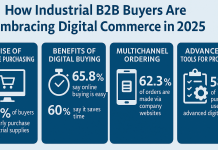6# e-Skimming
E-skimming is a process in which malicious malware compromises a website’s checkout pages. These are some of the most severe assaults an e-commerce site may face, as the attacker’s purpose is to steal your customers’ personal and financial information. Because of how damaging this is, it may lead to litigation and significantly harm your company’s reputation in a difficult-to-reverse way.
7# MITM
MITM (or man-in-the-middle) attacks occur when attackers listen in on chats or other communication taking place between the server of your e-commerce website and consumers accessing or utilizing that site. This attack can occur when a user connects to an unsecured, susceptible Wi-Fi network. It is critical to have a backup on your e-commerce website to prevent this sort of clandestine listening.
8# Exploitation of Pre-Existing Vulnerabilities
If you are not watchful, vulnerabilities might readily appear on your e-commerce store’s website. Attackers look for these flaws and arrange their invasion of your websites around them. This approach is used for SQL injection, cross-site scripting (also known as an XSS attack), and other assaults.
9# Bots
Cyberattackers frequently develop specially constructed bots to scrape website information that may be utilized to harm your company and its clients. These bots may obtain everything from inventories to sensitive financial and personal information. Competing firms have even been known to deploy bots to acquire access to financial data that might aid in their success.
10# DDoS/DDoS Attacks
When there is a disturbance in their corporate website, e-commerce firms typically suffer losses. DDoS and DoS assaults reduce revenue as businesses seek to regain safe, secure access to their site’s functioning. These assaults produce a flood of requests from (sometimes untraceable) IP addresses, causing it to crash and prevent your shop visitors from patronizing your company.









